By Phil Stevens on Feb 3, 2019
I should start by stating that in my mind, despite spending all of last Thursday on it, I’m still to climb the Great Ridge of Garbh Bheinn in winter. The ridge and I have unfinished business.
Garbh Bheinn means “Rough Hill”. It’s home to one of the West Coast’s most reliable mountain crags, one of the least pleasant walk-ins (even if it is quite short), and this mountaineering classic. A soaring ridgeline, rising from a remote corrie on a peninsula that sees few visitors.
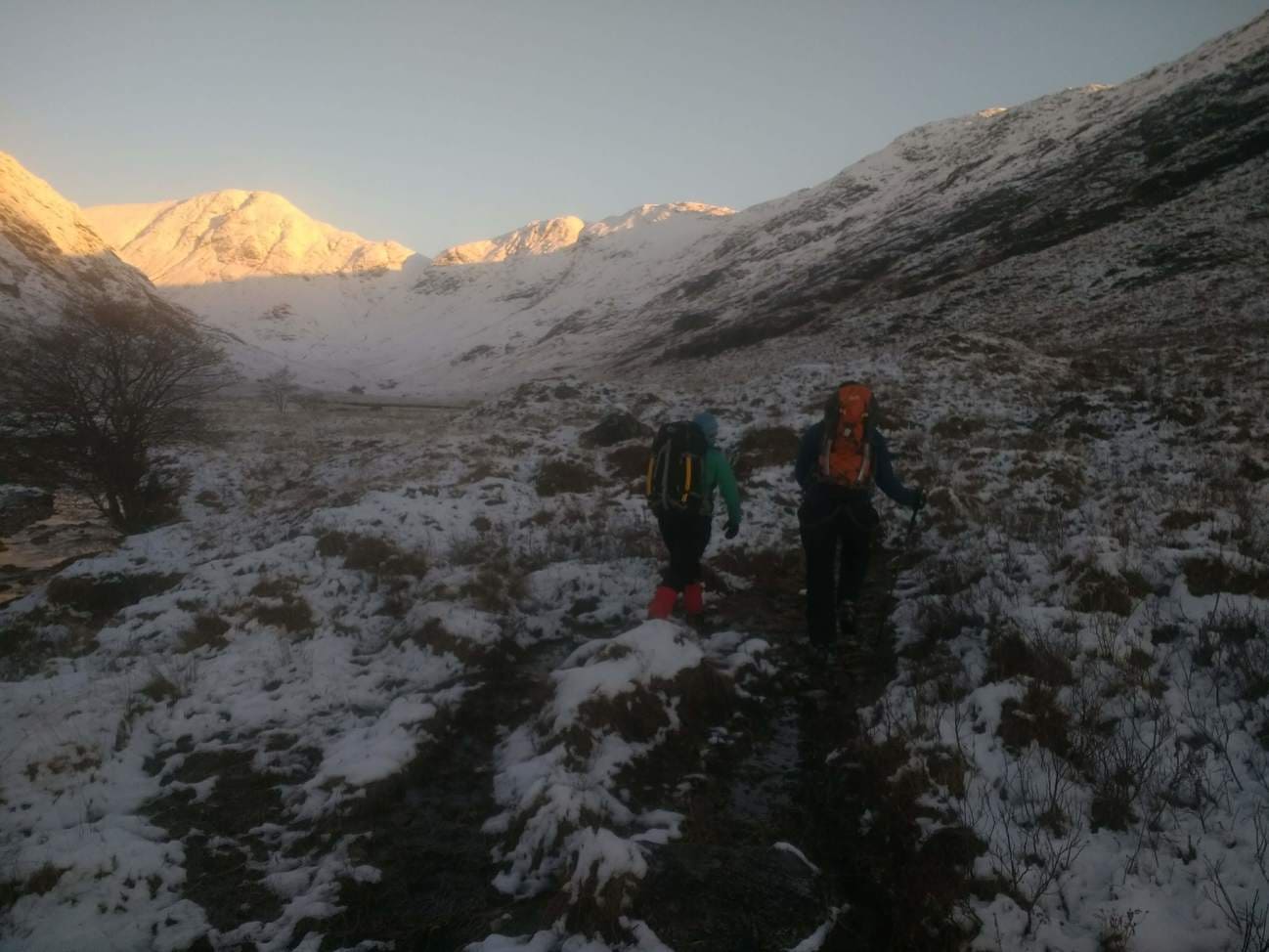
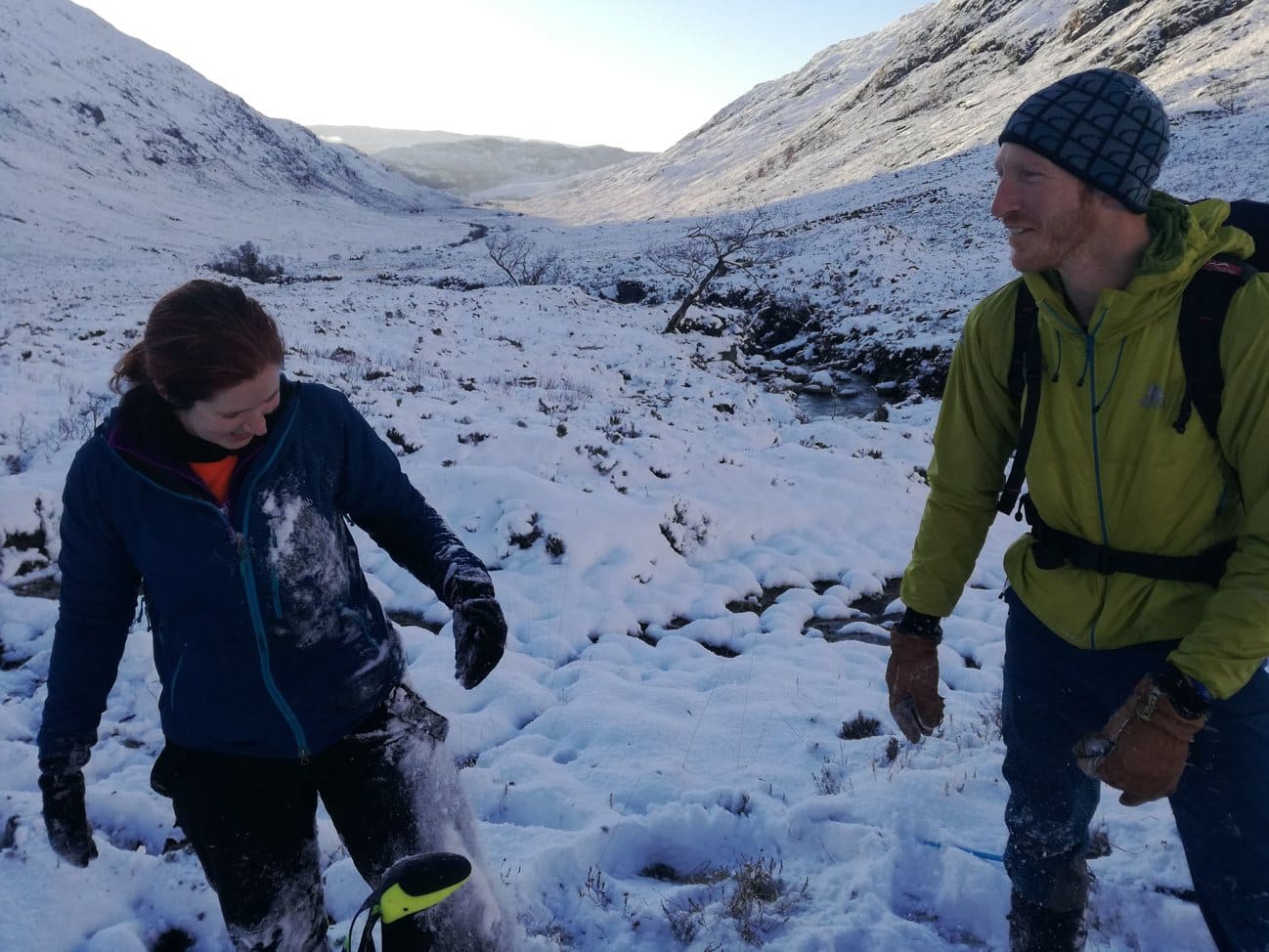
Marie, Em and I caught the 8am ferry at Corran, parked up at the end of the glen, and steadily wandered in through “thigh-deep-in-places” bogs and ever deepening snow. It took three hours to get to the base of the route through deep powder on loose rocks that really wanted a solid base. While we geared up I was pleased to find that the turf, while not 100% frozen, was good to climb on. I was less thrilled with the slabby approach ramp - described as no big deal in SMC’s Glencoe book, it’s actually pretty serious. While mostly Grade I, it has poorly protected short sections of III, with a lack of good belays. Time was ticking, the sun was high and strong for January, and as I looked up I felt like I could see the ridge removing its scanty winter raiment before my eyes.
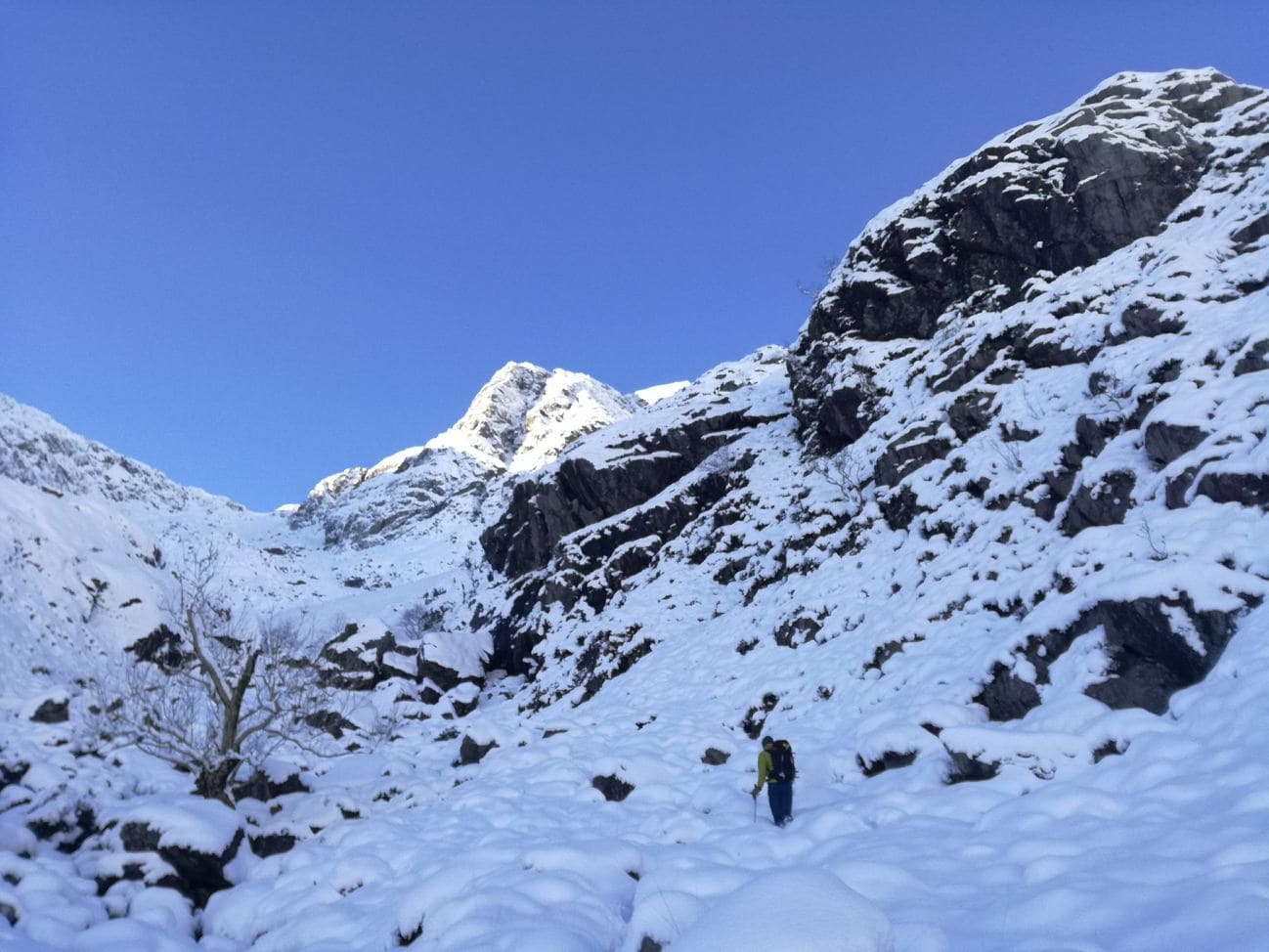
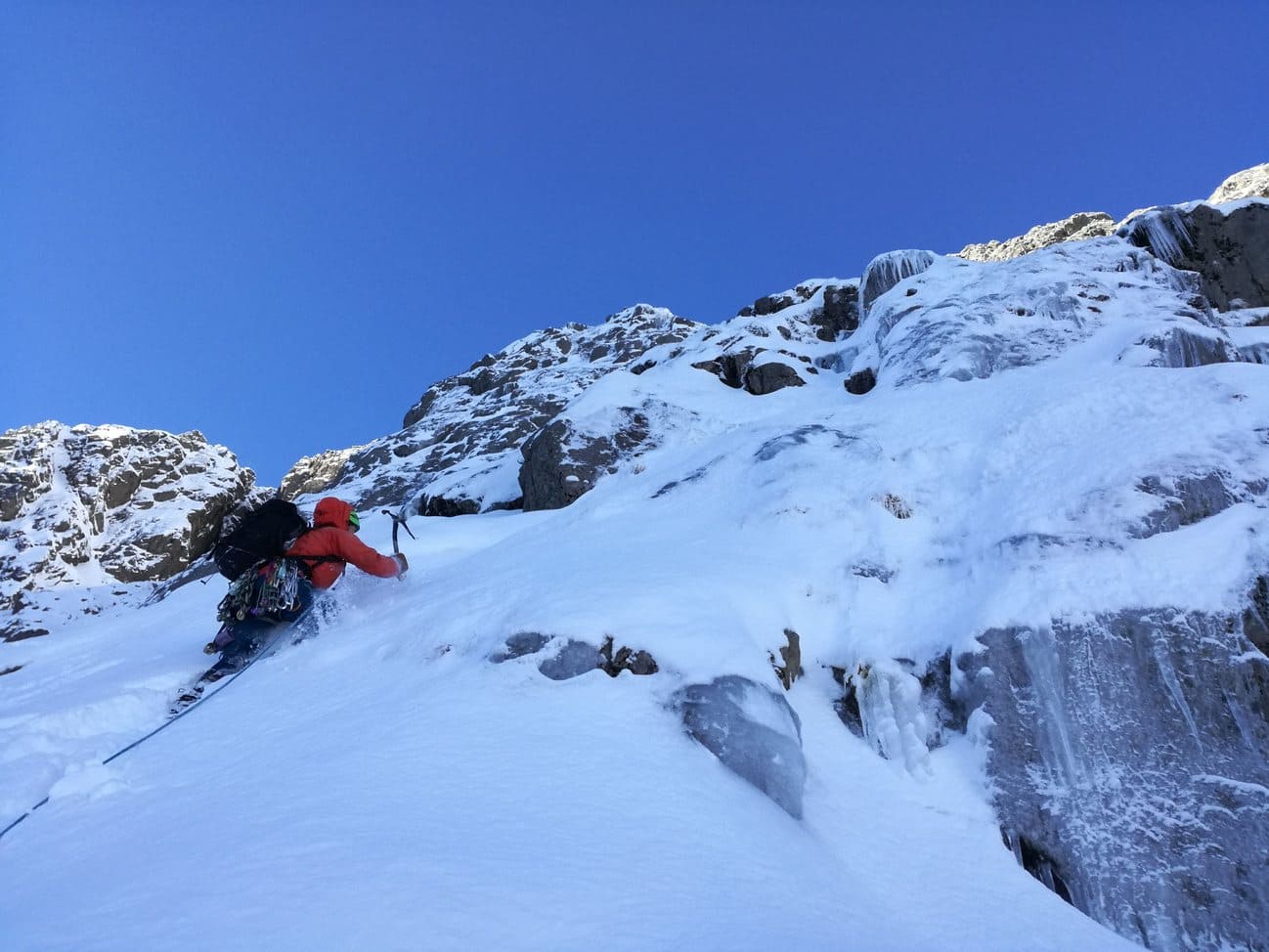
Five physical but easy pitches later, on arrival at the base of the route proper, it was clear that we were too late. “Not to worry”, I said glibly, “I’ve traversed into the ridge in summer and it was EASY. If we head up and left, we should be able to get out, no problem.”
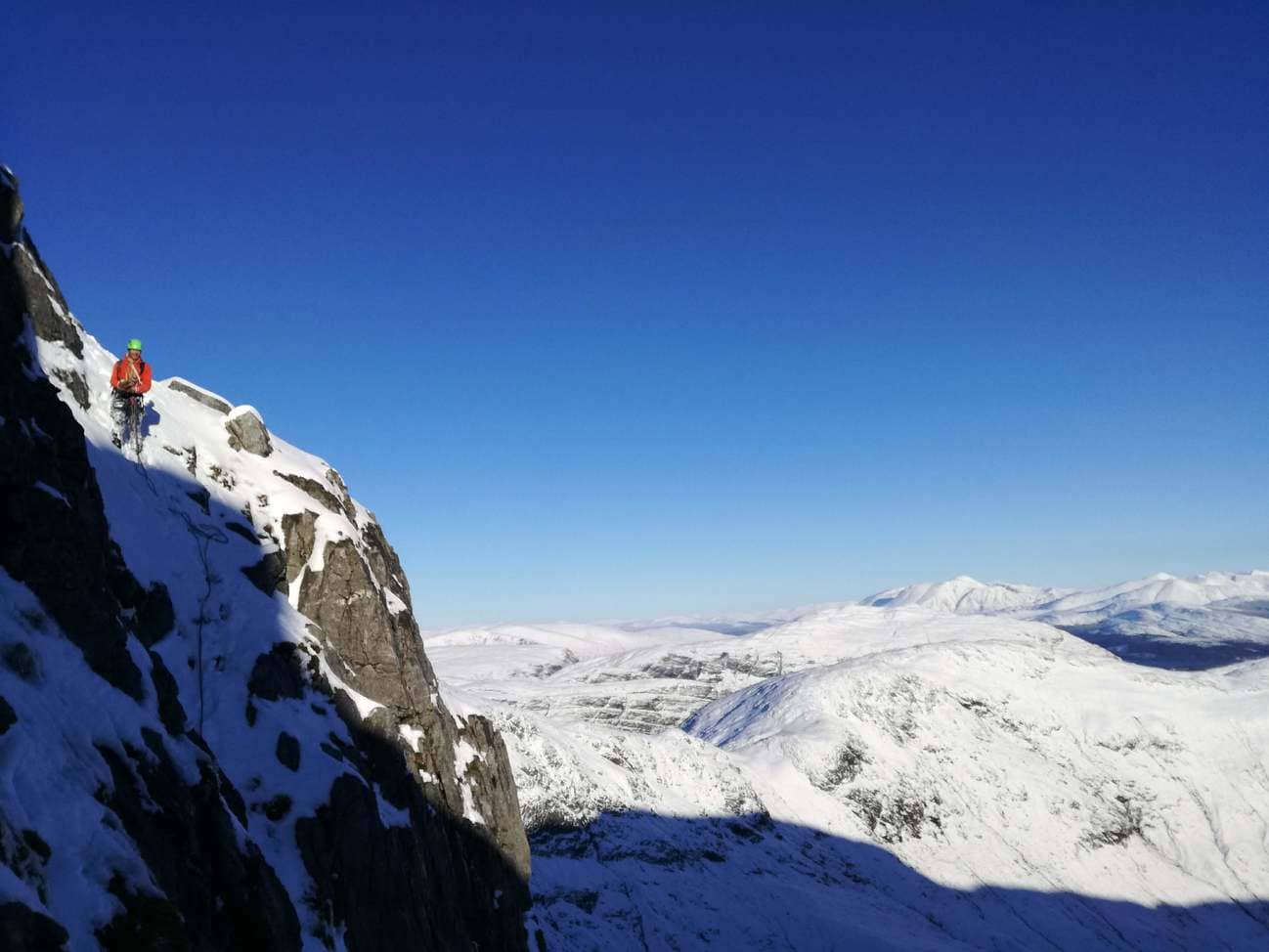
In winter, in hindsight, this is a fantasy. Ground that is benign in summer becomes serious and unforgiving under a blanket of unconsolidated powder. Again and again the ground forced us to climb up rather than traversing out, until eventually I found myself in the line of South East Chimney. This long route (which we had crossed right at the start) gets a Grade of III or IV. As the name suggests, it’s susceptible to thawing in the morning sun. It wasn’t in condition.
The ground further left was steep, serious, and hard. The spike, solid enough for three to abseil from, stared coolly at me. I looked back at it with disdain.
It’s important in the mountains to recognise when you’ve failed. It dawned on me that we had committed to leaving the line, therefore the route would not be getting “ticked” today. The only choice left to us was exactly how we would fail - in an upwards or downwards direction. Not enamoured with the prospect of 5 abseils on abandoned gear in dubious belays, only to walk out through the same powder we had wallowed through that morning, a decision was made. We would fail upwards. I looked up and right at the stripped wall of fractured quartzite. 80 degrees, enough ice on the ledges to need crampons - a pitch of alpine summer, transported 1500 miles to the Scottish west coast. I teetered and balanced with my feet, one axe sometimes hooked and sometimes shouldered, gloves palming and pinching, gently, very gently… The pitch relented. We were allowed through. “Is it going to be OK?”, Marie asked nervously as she reached the belay.
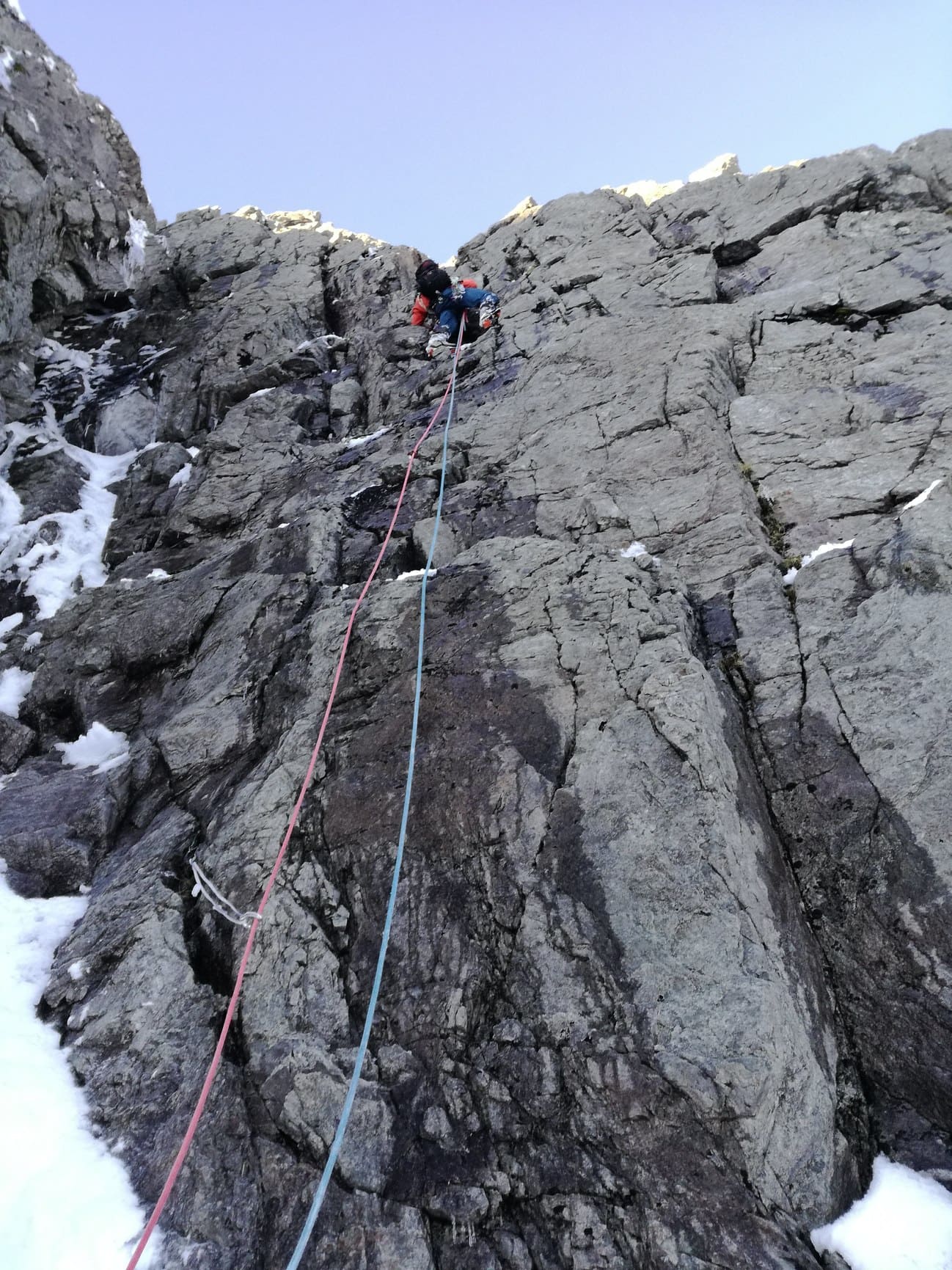
We looked up. Back on the line of the main ridge, two pitches of Grade III between us and the summit, it was now just a race against the setting sun. Daring to hope, I gunned it up the last 100m, running it out. The reward - a beautiful sunset, with all of Lorne and Lochaber laid out below us.
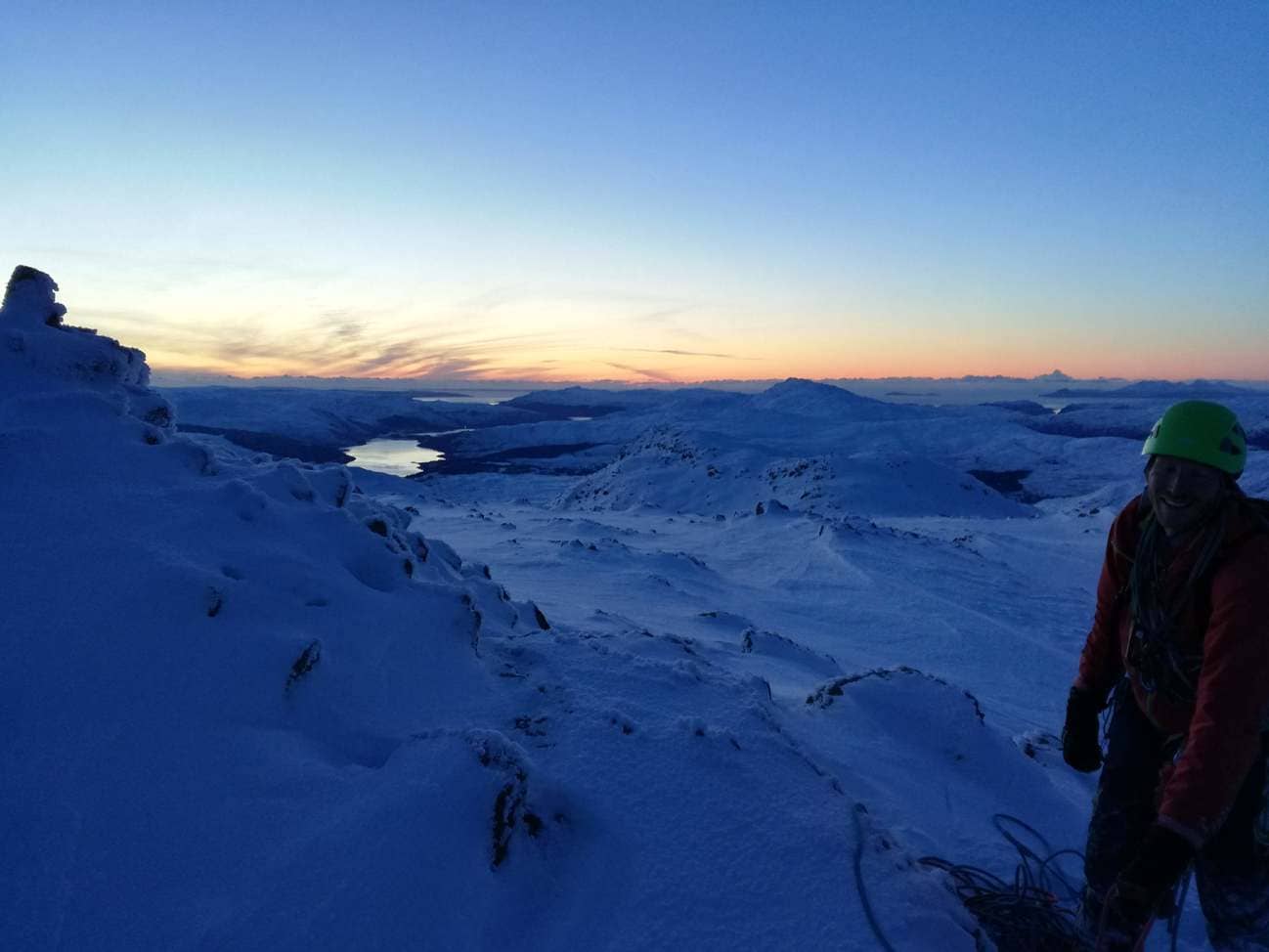
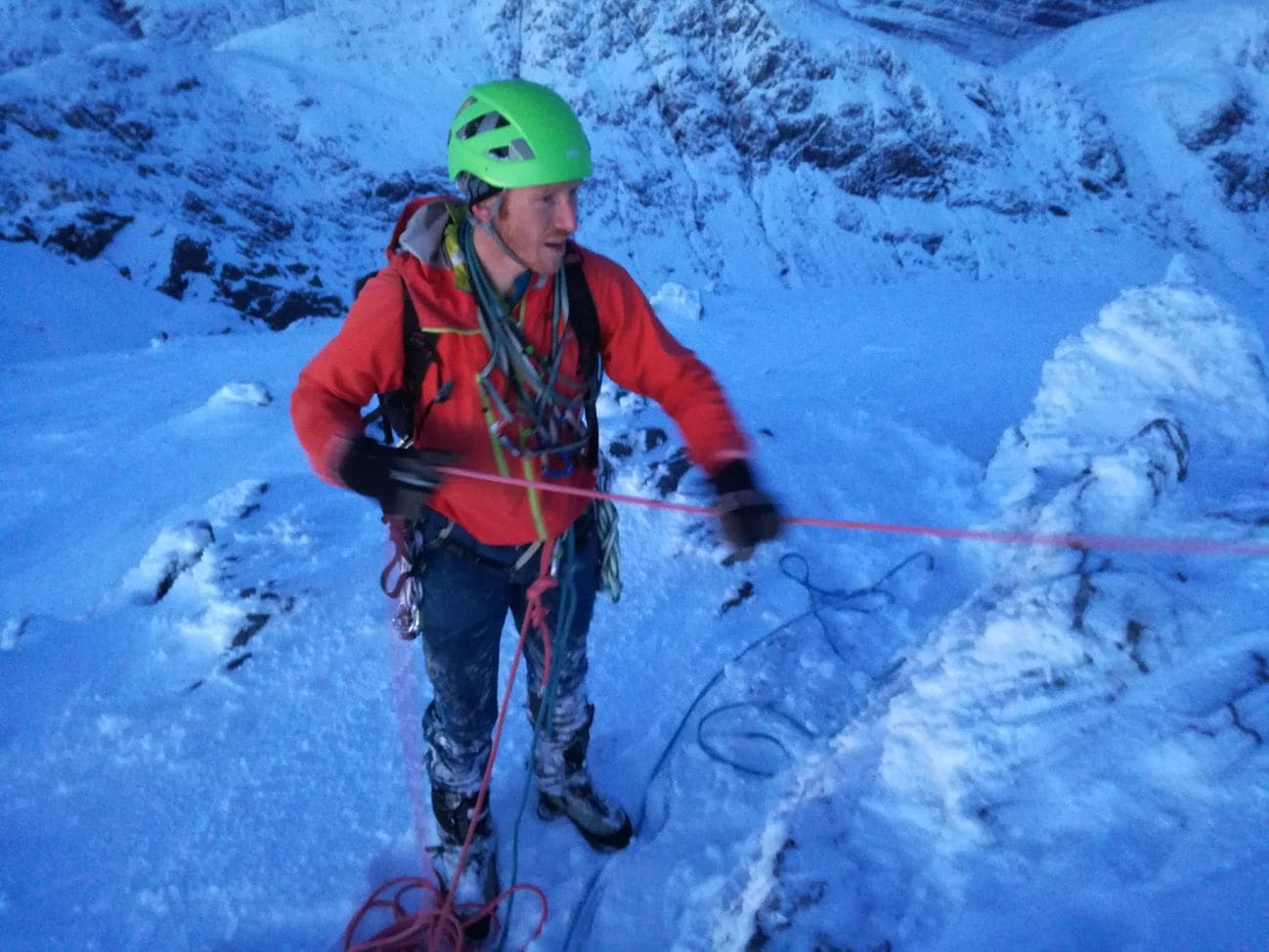
The sun dipped below the horizon as we coiled our ropes. The stars grew and sharpened against the dark canvas of a new moon, making a dramatic backdrop for our slow, tired descent from this wild-feeling place.
Now that it’s been a few days, the experience has settled in my mind, and the sense of satisfaction and retrospective enjoyment has grown. It’s good to fail sometimes, be it upwards or downwards. Mistakes were made, boundaries were pushed, reserves of energy were sapped, a wild place was enjoyed with friends, and an adventure was followed through its course.
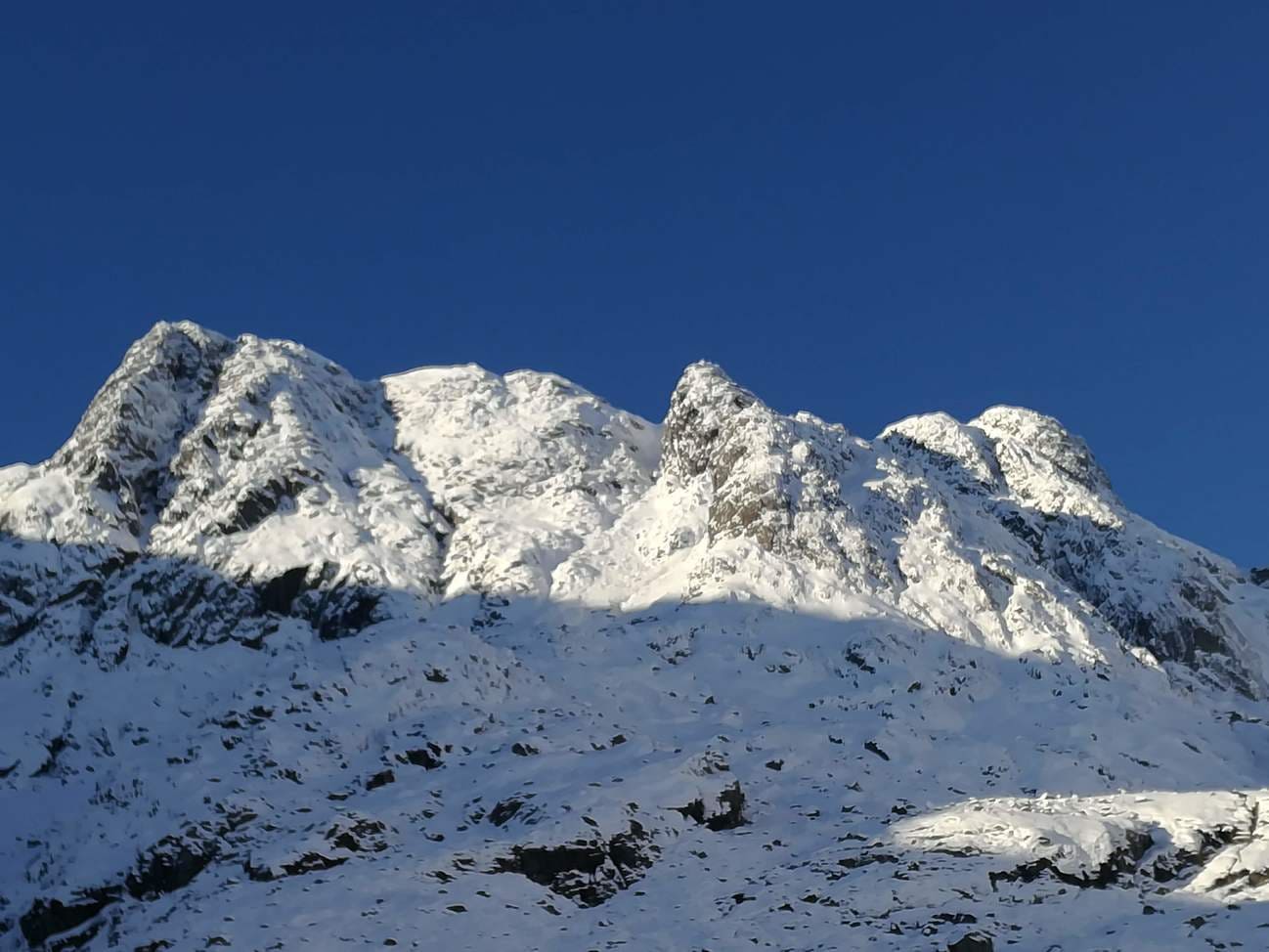
The Great Ridge is the sharp buttress on the far left of the picture above, running diagonally up and right. From the comfort of my armchair, I feel I can give the following guidance to others considering this route in winter:
1) The ridge faces east and is vulnerable to thawing in the sunlight. I’m sure it’s often in condition, and I know it’s a beautiful place to be in the sun, but you can’t have it all - so often the case in winter climbing. For the best conditions, pick an overcast day (think Cobbler conditions).
2) The grid reference given in the SMC guidebook is wrong. The real location of the start of the ridge is NM 906 622. It’s also likely to take longer to approach than the suggested 2 hours in anything other than fully consolidated snow.
3) While consolidated snow isn’t needed for the ridge itself, it really would help on the final approach. The Great Gully approach (from the North) looked horrendous. The ramp from South-East Chimney WAS pretty horrendous. Neve would make either option do-able, with the former being more direct.
4) The turf, where exposed, needs to be frozen for safe progress to be made.
5) Don’t expect to be able to traverse out. Great Gully and South-East Chimney effectively bound the flanks of the ridge in winter - you’re committed to going either up or down if you start. For reference, the steep wall we climbed to escape was tricky to grade given the lack of winter conditions, but felt about V 5, with just enough gear.
6) It’s long. We piched pretty much all of it - without sticky snow, we just couldn’t move together. This would be totally different in better conditions. On this failed attempt, we climbed 11 pitches, most of which were between 45 and 50m long. I frequently just about hit the belay on stretch.
7) Descending Sron a Garbh Choire Bhig to get back to the car is do-able but long and serious over rough ground, with good navigation needed to outflank the numerous steep crags that form this rocky shoulder.
So there we are. Learn from our mistakes, get on that ferry, and go and enjoy what is undoubtedly an underrated winter climbing adventure. Bon chance.